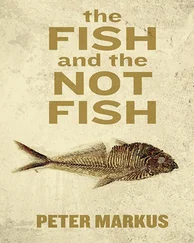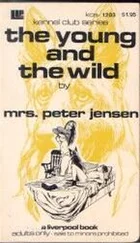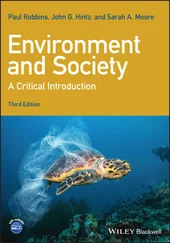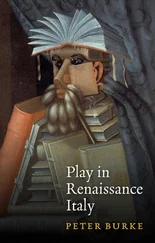25. For another interpretation in this direction, see Foucault Michel, Las palabras y las cosas, 15th. ed., México, Siglo XXI Editores, 1984.
26. Todorov, El jardín…, pp. 35-37.
27. Todorov, El jardín…, pp. 38-39.
28. Lorite Mena José, Sociedades sin Estado. El pensamiento de los otros, Madrid, Akal, 1996.
29. Todorov Tzvetan, La conquista de América. La cuestión del otro, México, Siglo Veintiuno, 1987, and Ceballos Gómez, Diana Luz, Hechicería, brujería e Inquisición en el Nuevo Reino de Granada. Un duelo de imaginarios, 2nd. ed., Bogotá-Medellín, Universidad Nacional de Colombia, 1995.
30. Bachmann-Medick Doris, Cultural Turns. Neuorientierungen in den Kulturwissenschaften, 2nd. ed., Hamburg, Rowohlt, 2007.
31. Cassirer wrote works about Descartes, Leibniz, Kant, Einstein’s theory of relativity, among others, as well as four volumes on The Problem of Knowledge in Philosophy and in Modern Science and three volumes on The Philosophy of Symbolic Forms. This, of course, without considering those directly related to symbolism, cultural critique, literature…Cassirer gave conferences and had a close relationship with the Warburg-Institute in Hamburg. All three reflected on the problems of knowledge, views of the world, historicities and what Dilthey called Lebensphilosophie, philosophy of life, and, therefore, of culture, which they released from the tight barriers of cultural products or objects, in order to focus on its ways of creating, functioning, circulating and recreating or “reinventing”. Just to mention some of their works: Wilhelm Dilthey, Einleitung in die Geisteswissenschaften. Versuch einer Grundlegung für das Studium der Gesellschaft und Geschichte; Die geistige Welt. Einleitung in die Philosophie des Lebens; Der Aufbau der geschichtlichen Welt in den Geisteswissenschaften; Logik und System der philosophischen Wissenschaften. Vorlesungen zur erkenntnistheoretischen: Logik und Methodologie (1864-1903), in Complete Works, 26 volumes, Göttingen, Vandenhoeck & Ruprecht, 2006. Cassirer Ernst, Das Erkenntnisproblem in der Philosophie und Wissenschaft der neueren Zeit (volume 1: 1906; volume 2: 1907; volume 3: 1920; volume 4: 1957), Berlin, Verlag von Bruno Cassirer; Substanzbegriff und Funktionsbegriff: Untersuchungen über die Grundfragen der Erkenntniskritik, Berlin, Verlag von Bruno Cassirer, 1910; Vorlesungen und Vorträge zu philosophischen Problemen der Wissenschaften (1907-1945), Hamburg, Felix Meiner Verlag, 2010; Zur Logik der Kulturwissenschaften (1942), Hamburg, Felix Meiner Verlag, 2011. Karl Mannheim, Wissenssoziologie [1929], Auswahl, Neuwied/Berlin, Luchterhand, 1964; Die Strukturanalyse der Erkenntnistheorie, Berlin, Reuther & Reichard, 1922; Strukturen des Denkens, Frankfurt am Main, Suhrkamp, 1980; Ideologie und Utopie [1929], 8th. ed., Frankfurt am Main, Vittorio Klostermann, 1995; Konservatismus, Frankfurt am Main, Suhrkamp, 1984.
32. Benjamin Walter, Das Kunstwerk im Zeitalter seiner technischen Reproduziertbarkeit [1936], 6th. ed., Frankfurt am Main, Suhrkamp, 2003; Weber Alfred, Kulturgeschichte als Kultursoziologie, Leiden, Sijthoff, 1935; Adorno, Theodor, Kulturkritik und Gesellschaft II. Eingriffe. Stichworte, Frankfurt am Main, Suhrkamp, 1977; Konesmann Ralf (ed.), Kulturkritik. Reflexionen in der veränderten Welt, Leipzig, Reklam, 2001; Bausinger Hermann, Volkskunde. Von Alterstumforschung zur Kulturanalyse, Tübingen, TVV, 1979; Bausinger Hermann, Utz Jeggle, Gottfried Korff and Martin Scharfe, Grundzüege der Volkskunde, 4th. ed., Darmstadt, Wissenschaftliche Buchgesellschaft, 1999; Greverus Ina-Maria, Kultur und Alltagswelt. Eine Einführung in Fragen der Kulturanthropologie, Munich, C. H. Beck, 1978; Landwehr Achim, Kulturgeschichte, Köln-Weimar-Wien, Böhlau, 2009; Maurer Michael, Kulturgeschichte. Eine Einführung, Köln-Weimar-Wien, Böhlau, 2008, Bachmann-Medick Doris, Cultural Turns... Part of the works of Cassirer and Dilthey, of Burckhardt, Lamprecht and Huizinga, among other authors of this tradition, would give an account of its history.
33. Even if Adelung is more known for his critical investigation of the German language, since he’s one of the pillars of current Germanistic and of modern dictionaries and grammars (his most know work: Grammatisch-kritisches Wörterbuch der hochdeutschen Mundart, 5 volumes, 1774-1786) and for editing, since 1772, what is considered the first periodic publication for children in German, the Leipziger Wochenblatt für Kinder (“Weekly paper for children in Leipzig”), he also wrote history (and not only cultural, he also wrote about war) and about what we could call popular traditions or Volkskunde, a “History of human Folly…, gold manufacturers, visionaries, diviners and other philosophical monsters” (Geschichte der menschlichen Narrheit, oder Lebensbeschreibungen berühmter Schwarzkünstler, Goldmacher, Teufelsbanner, Zeichen- und Liniendeuter, Schwärmer, Wahrsager, und anderer philosophischer Unholden, 7 volumes, Leipzig 1785-1789).
34. Allgemeine Geschichte der Kultur und Literatur des neuern Europa, 2 volumes, Göttingen, 1796-1799. He also wrote History of literature from its earliest times down to the present (Geschichte der Litteratur von ihrem Anfang bis auf die neuesten Zeiten, 6 volumes, Göttingen, 1805-1813. He also wrote about what we would call today a history of the present: about the French revolution (1797), the world history between 1799-1814, the history of the 19th century (1817), the history of literature, as well as a history of the latest three centuries in six volumes.
35. Other important works: Abhandlung über der Ursprung der Sprache, 1772; Briefe zur Beförderung der Humanität, 1793-97 (10 collections), and Auch eine Philosophie der Geschichte zur Bildung der Menschheit, 1774, as well as others about language, aesthetics, popular songs, German literature, art… and a Metacritique to the Critique of Pure Reason (Leipzig, 1799). The topic of the importance of language will be picked up by Sapir and Whorf in the 20th century (linguistic relativity); a hypothesis according to which language affects the view of the world and cognitive structures of speakers. For a broader scope of the aforementioned subjects, see: Berlin Isaiah, Vico and Herder. Two Studies in the History of Ideas, New York, Viking Press, 1976, y Löchte Anne, Johann Gottfried Herder. Kulturtheorie und Humanitätsidee der “Ideen”, “Humanitätsbriefe” und “Adrastea”, Würzburg, Königshausen & Neumann, 2005, especially the second part pp. 27-73.
36. Lamprecht Karl, „Die neue historische Methode“, in Historische Zeitschrift, LXXXI, 1898, pp. 193-273; Moderne Geschichtswissenschaft. Fünf Vorträge, Freiburg im Breisgau, Hermann Seyfelder, 1905 (five conferences on theories of history). During the last quarter of the 19th century, Lamprecht generated discussions, new to the discipline, that were appropriated by Huizinga, Pirenne, and Marc Bloch, who also did his doctoral training in Germany, and by Henri Berr in France. This caused what is known as the Lamprecht debate, in which this historian advocated the historic-cultural analysis that is framed in a wider debate: “the fight” for the method (Methodenstreit), which also involved discussions between members of the New Historical School of National Economics (Gustav Schmoller, Werner Sombart…) that advocated an economic analysis that took into account socio-cultural implications, and the School of Vienna. In his Inaugural Lecture as a Professor in the University of Groningen, Huizinga made reference to his approach to authors like Wilhelm Dilthey, Georg Simmel, Wilhelm Windelband, Heinrich Rickert and Eduard Spranger, all belonging to the field of culture knowledge, known thanks to Lamprecht (v. Oestreich Gerhard, “Huizinga, Lamprecht und die deutsche Geschichtsphilosophie: Huizingas Groninger Antrittsvorlesung von 1905”, in W.R.H. Koops et. al., Johan Huizinga 1872-1972, The Hague, Springer, pp. 1-28). Henri Berr, in the first issue of his Revue de Synthèse Historique, published an article about “The Kulturwissenschaftliche Gesellschaft of Fribourg in Breisgau” (“The Society of Cultural Studies of Fribourg in Breisgau”) and the article “La méthode historique en Allemagne” by Lamprecht (1900, pp. 21-27), a method that he described as historical-cultural (Culturhistorische). In the article, he also referred to his text Die culturhistorische Methode, Berlin, R. Gaertner, 1900, and, among other traits, he promoted interdisciplinarity with other social sciences and the support of psychology in historians’ interpretations, aspects recollected by Annales. We can’t forget, when the initial postulates of this magazine are considered, Bloch’s education, his exchanges and discussions with Pirenne (educated with Lamprecht), Berr’s and his magazine’s influence and, of course, the model of the German magazine Vierteljahrschrift für Sozial- und Wirtschaftsgeschichte [1903]. Seeba Hinrich C., “Interkulturelle Perspektiven. Ansätze einer vergleichenden Kulturkritik bei Karl Lamprecht und in der Exil-Germanistik“, German Studies Review, Vol. 16, No. 1, Feb., 1993, pp. 1-17. Similarly, during the 80s, while a teacher in Bonn, he left a profound mark in his students, some of which were recognized scholars with a peculiarity: they contributed to the conformation of art history as a discipline in universities, with a notorious example: Aby Warburg, founder of the Library and Institute Warburg in Hamburg and of iconology and cultural analysis of images. Brush Kathryn, “The Cultural Historian Karl Lamprecht: Practitioner and Progenitor of Art History”, Central European History, Vol. 26, No. 2, 1993, pp. 139-164.
Читать дальше












